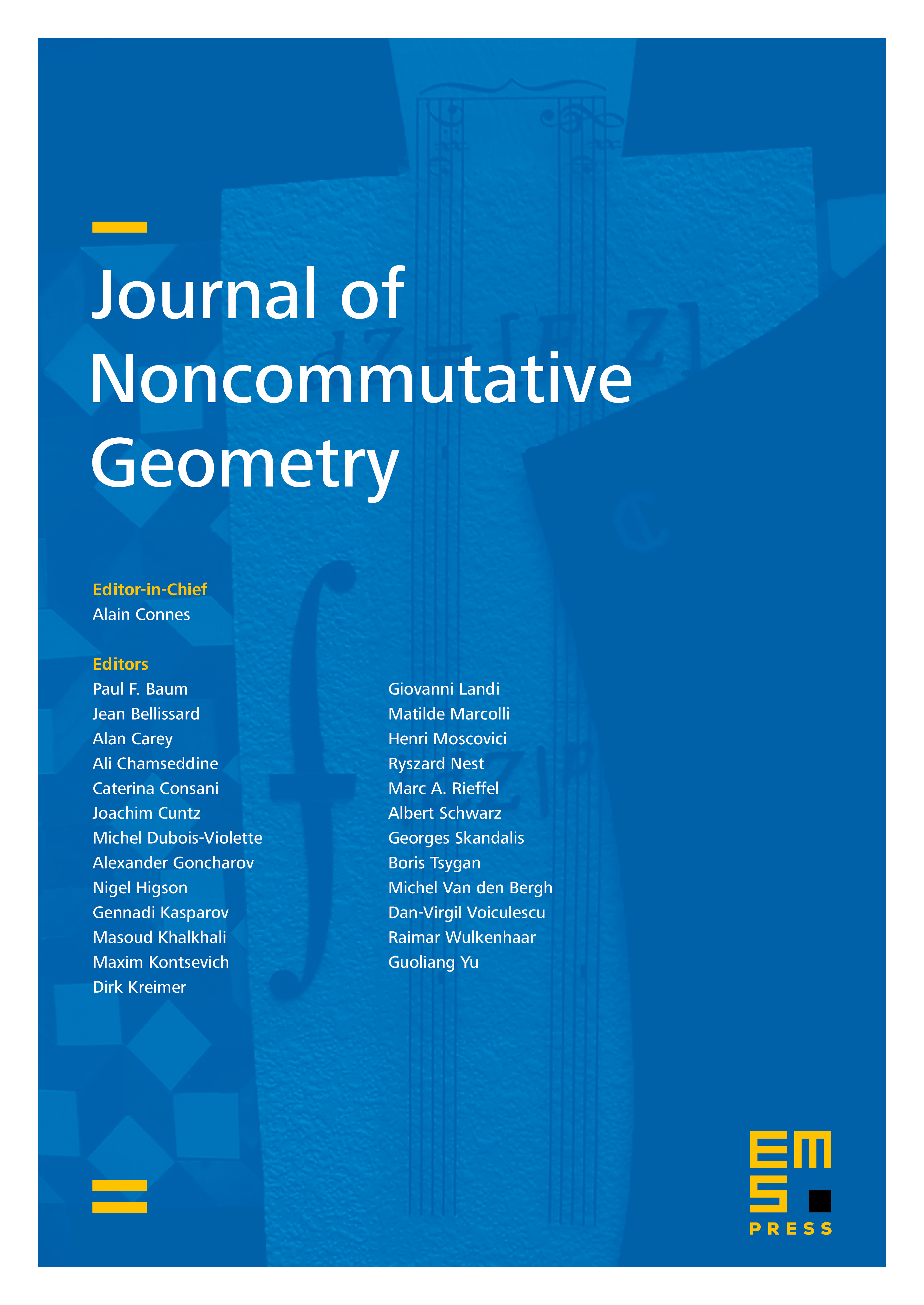Noncommutative Riemannian geometry and diffusion on ultrametric Cantor sets
John Pearson
Georgia Institute of Technology, AtlantaJean Bellissard
Georgia Institute of Technology, Atlanta

Abstract
An analogue of the Riemannian Geometry for an ultrametric Cantor set is described using the tools of Noncommutative Geometry. Associated with is a weighted rooted tree, its Michon tree [29]. This tree allows to define a family of spectral triples using the -space of its vertices, giving the Cantor set the structure of a noncommutative Riemannian manifold. Here denotes the space of Lipschitz continuous functions on . The family of spectral triples is indexed by the space of choice functions, which is shown to be the analogue of the sphere bundle of a Riemannian manifold. The Connes metric coming from the family of these spectral triples allows to recover the metric on . The corresponding -function is shown to have abscissa of convergence, , equal to the upper box dimension of . Taking the residue at this singularity leads to the definition of a canonical probability measure on , which in certain cases coincides with the Hausdorff measure at dimension . This measure in turn induces a measure on the space of choices. Given a choice, the commutator of with a Lipschitz continuous function can be interpreted as a directional derivative. By integrating over all choices, this leads to the definition of an analogue of the Laplace–Beltrami operator. This operator has compact resolvent and generates a Markov semigroup which plays the role of a Brownian motion on . This construction is applied to the simplest case, the triadic Cantor set, where: (i) the spectrum and the eigenfunctions of the Laplace–Beltrami operator are computed, (ii) the Weyl asymptotic formula is shown to hold with the dimension , (iii) the corresponding Markov process is shown to have an anomalous diffusion with as .
Cite this article
John Pearson, Jean Bellissard, Noncommutative Riemannian geometry and diffusion on ultrametric Cantor sets. J. Noncommut. Geom. 3 (2009), no. 3, pp. 447–480
DOI 10.4171/JNCG/43